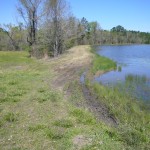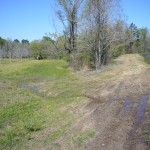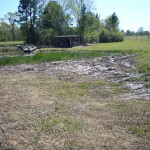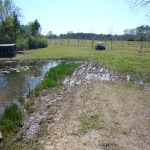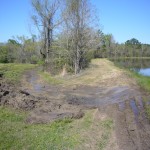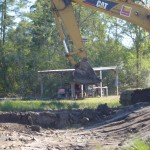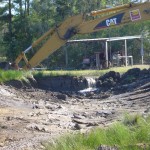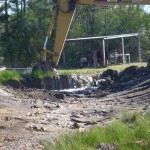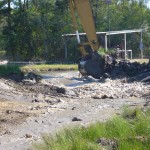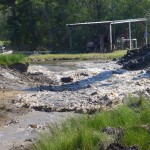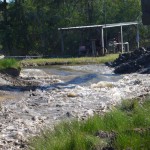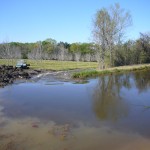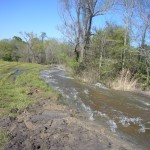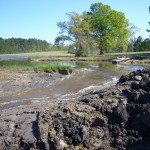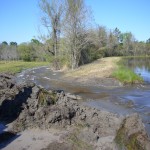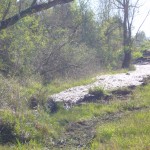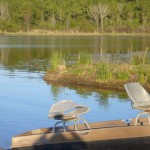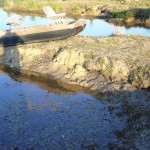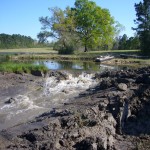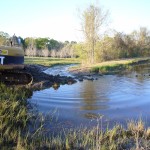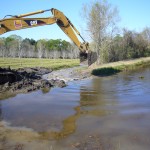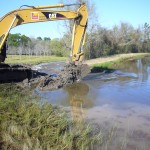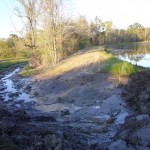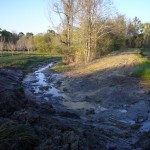Most ponds on private property are formed by earthen dams. It’s a relatively inexpensive and easy way to contain water if you have clay soil. However, we’ve learned there are things to watch on all dams, and one thing especially critical for earth embankments is to limit erosion. All ponds will have water running into them and, therefore, water running out. Controlling water outflow needs to be addressed on this dam. As you can see by the following pictures water was flowing out over the dam in the lowest places and not in a controlled manner. The water level was quite high, overtopping the dam in the middle at one point. In a period of sustained rainfall this could be catastrophic. Sheetflow of water over the dam would cause erosion quite quickly since the dam soil is already wet. The pond water level should not be higher than 2-3 feet below the dam crest. We will need to provide a main spillway to adjust the height of the water and also an emergency spillway for periods of heavy watershed.
While we are deciding how to address the problem permanently, emergency steps were taken to lower the level of the water to avoid a dam failure. We rented a big toy and hired Dean Kolp to play in the mud. He cut a waterway around the dam to the existing creek downstream.
Once the the channel was ready, the last few buckets of soil were taken out to create a new river.
The creek was soon full to overflowing. We had almost underestimated how much water would be coming out, but we never claimed to be engineers.
After 2 – 3 hours, the lake level on our seven acre pond had dropped about one foot.
Damming the hole back up is no big thing with a 20 ton shovel.
We decided to plug the hole and make a two foot wide trough.
Now we adjust the level of the pond with a hoe and a spade.
tgh
